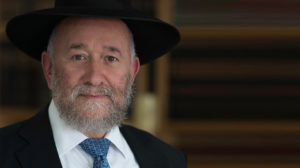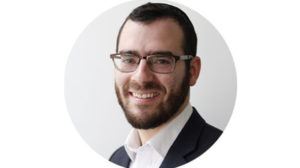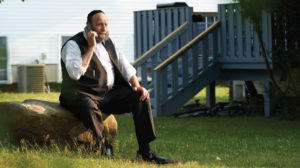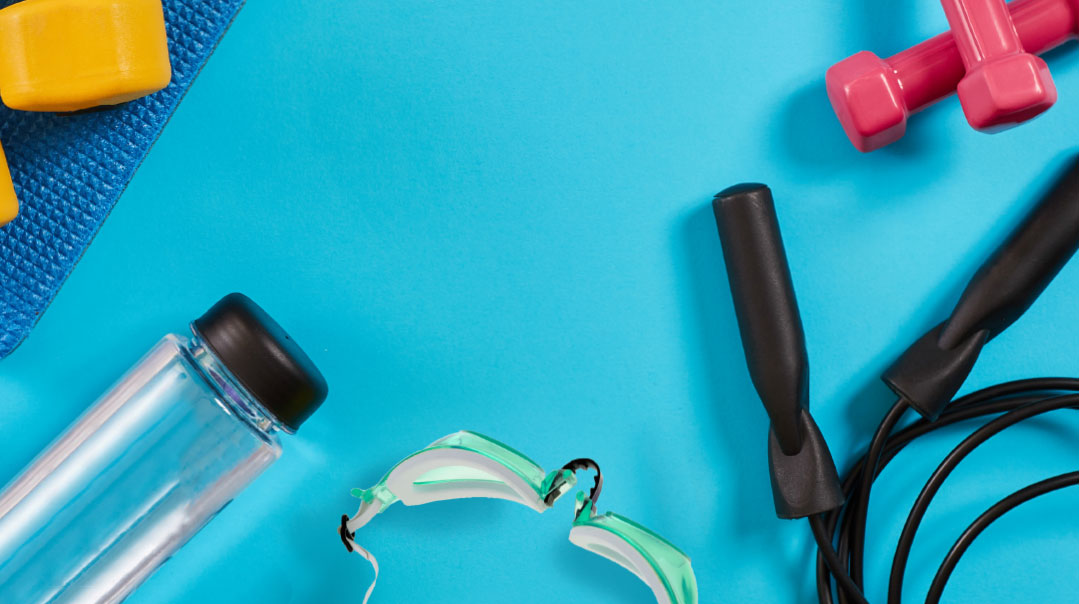So You’ve Always Loved… Medicine

Five off-the-beaten-track careers for the woman who’s always dreamed of practicing medicine

F
or frum girls with a passion for medicine, the thought of becoming a doctor can be a daunting proposition. The staggering costs of med school and the endless hours of residency can be very hard to balance with running a home and raising children. But what if you’ve always been fascinated by the intricacies of the human body? What if you’d love to help heal others? Here, five off-the-beaten-track careers for the woman who’s always dreamed of practicing medicine
Dosimetrist
Chavie Millunchick, 12 years’ experience
Schooling
Bachelor’s degree + medical dosimetry certification
(1–2 year program)
National mean salary
$110,545
How I got into dosimetry:
I had a master’s in chemical engineering, but I wasn’t using it; I was doing admin work. A physician from our community, Dr. Ross Abrams, met me and said, “You have this background and aren’t using it? Let me show you something.”
What a dosimetrist does:
Dosimetrists plan radiation treatments, mainly for cancer patients. Cancer is generally treated with surgery, radiation, chemo, or a combination of the three.
When radiation is necessary, the oncologist delineates the normal organs and the unhealthy ones on a CAT scan. She’ll then prescribe how much high-energy radiation to give over how many days. It could be a lot in a few days or more evenly spread out.
A dosimetrist uses software to design a radiation plan. A radiation plan tells the treatment machines from which directions to emit the beams, the energy of the beams, which beam modifiers to use, and most importantly, the various apertures that are used. Every patient is different. It’s kind of like a puzzle; we need to figure out how we can get the least amount of radiation going through healthy tissue and the most to cancerous tissue. There are guidelines about how much radiation each healthy organ can withstand.
After we make the plan, we show it to the physician, who either approves it or asks us to tweak the plan. Once the plan is finalized, a radiation therapist will actually turn on the machine and give treatment using the parameters we set up.
Hitting the books:
When I started, dosimetry was mostly on-the-job training: Radiation therapists performed the treatments, when they wanted to step up the ladder, they went to learn dosimetry. Since I didn’t have the background, I worked in a hospital for three years before sitting for the exam. But as of 2017, you have to go through a formal program. A lot of programs give a master’s as part of the certification, which is nice.
Most programs are one year, some are two. It’s easier to get in with a radiation therapy background (and it helps to go in with the background and language), but the programs do accept people with a bachelor’s of science.
A lot of dosimetry programs are remote; the whole class sits at a computer at the same time and participates in a live feed. Then the clinicals are done locally. When a student is rotating at our clinic, the student is at home in class two days a week; the rest of the time they’re in the clinic, learning hands-on. There are lots of quizzes, tests, and reports. It’s rigorous but manageable.
All in a day’s work:
We have various software programs we use to design the best plan; we consult with physicians and physicists. Sometimes we want to see how the CAT scan looks next to a PET scan so we’ll bring it in — that’s called a fusion. We do contouring and delineating to mark off which organs are healthy, and then we do the actual planning. But we don’t track the patient’s progress — that’s the physician’s job. They may come back to us and say something changed, the patient lost or gained weight, and then we redo the plan.
In terms of hours, it’s hospital-shift hours — some of us cover early, some stay as late as 5 or 6. It’s usually not at night. Jobs are full-time, and the pay is good, with great hospital benefits.
Why I love my job:
I can’t imagine doing anything else! It’s always changing, really interesting, very creative. Every patient is different, you’re always trying new things, trying to get the best plan, never settling for just okay.
Memorable patient encounter:
Is it bad if I can’t think of any? You’re working mostly with physicians — it’s nice for people who want to work in a medical field but are nervous about patient interaction. You’re helping patients without sticking a needle in them.
Would it be a good fit for me?
It’s a relatively unknown field and a lot of people don’t realize they’d like dosimetry. But people who like math and science often enjoy it. You must be good with numbers and have a good attention to detail. You need to be able to have something jump out at you and say, “This looks out of place.” It can be hard to get a feel for it — try to go to a clinic and follow for a few days to see if you’ll really enjoy the work.
Radiation Badge
There’s a spectrum of radiation exposure. I deal mostly with external beam radiation, like what they have in a dental office. I have very little exposure, I just plan it. Still, we all wear badges that detect radiation to be sure we’re under the acceptable level. Every month or two the badges are sent to an outside vendor who tabulates the readings. There’s a lower threshold for exposure during pregnancy, and a pregnant woman is given two badges, one for the fetus.
Sonographer
Baila Langer, 6 years’ experience
Schooling
Prerequisites + 14-month certification program
Average median salary
$65,000
Why I chose sonography:
It’s a career that pays a decent amount without long training. I did the program as a married woman with a baby. It wasn’t easy, but it was quick! I was done in a little over a year.
What a sonographer does:
Most people think of pregnancy when they hear the word ultrasound, but we actually use this imaging to study many organs.
Hitting the books:
Every school and every state are different. In order to work as a sonographer in any hospital, you need to be registered and have the RDMS title. You need to have graduated from an accredited school, a 14-month minimum. In Baltimore, where I went to school, you don’t need a bachelor’s, just the prerequisites (60 credits, the equivalent of an associate’s). The schooling is very intense, with a mix of academics and clinical.
To maintain a job, you must pass boards in specific specialties — but that doesn’t limit what you can do. I’m certified in abdominal and ob-gyn, but I also do vascular studies. I’ll be sitting for the exam in vascular sonography soon, since that will improve my marketability — the more areas I’m specialized in, the more pay I can get. (To perform specific exams, the hospital department must have a tech specialized in that modality.)
All in a day’s work:
Since I work in the ER, I do emergency type studies. I might look at kidneys for kidney stones, check for ovarian torsion, examine a woman who thinks she’s miscarrying, perform gall bladder scans, or look at legs to rule out DVT. I’m never bored!
Why I love my job:
I’m more of a high-energy person. I’d be bored doing the same thing all day. Here, it’s always moving, always interesting.
You have radiologists signing off on everything you do; you’re their eyes. They call and say, “What did you see? Why didn’t you measure that for us?” They have to trust that you knew what you were doing and took the best picture you could. As your skill improves, it’s a great feeling — you know what you’re doing, and you’re always learning more.
Who’d make a good sonographer:
Anyone can do it if they apply themselves over time. When students come in for clinicals I always tell them not to get frustrated just because a classmate has better hand-eye coordination and is catching on faster — they’ll get there with practice. The longer you work, the better the pictures. To a student, all pictures look the same, but I can tell the difference between mine and those of a tech working for 15 years — and between theirs and someone who’s been working for 30 years.
Memorable moments:
It can be easy to get frustrated with the job, especially when you’re working in a hospital setting. Patients are cranky, they’re tired, they’re scared. It really makes a difference in the patient’s day if I give them a little chizuk, offer them a blanket, tell them to have a great day. Especially with elderly patients — I try to think, if this was my grandfather, how would I want someone to treat him?
I wish someone had told me:
I work part-time, two ten-hour shifts a week. But I went into this thinking I’d be able to work six hours a day and then take care of my kids. Most jobs are hospital based, where it’s shift work — minimum eight hours. But the good part: I work just two days a week, I get benefits for my family through the hospital, and I’m home more than I’m at work.
Another thing I wish I’d known: You can get additional certifications, but there’s no path up: You can’t get a masters in ultrasound, there’s no doctorate of sonography. If I ever want to make more money, it would mean going back to school to start a new career.
What I’d tell someone looking to go into this:
I very often will discourage single girls from doing this. You’re going to be performing uncomfortably personal exams on men, so you have to be okay with that. You also can’t be finicky — the first time I walked into a biopsy I thought I’d pass out. Overall, though, ultrasound is medicine, you’re touching people, but you’re not doing the dirty work.
Hard-pressed
Sonography is the best paid of all imaging jobs, because it’s very user dependent. When it comes to a CAT scan or X-ray, the technician just puts the patient under a machine, but with sonography, you have to play around with the settings, press correctly, change the angle of the probe. You need to work hard to get good pictures, especially when it comes to overweight patients (and the client populations in America are getting heavier and heavier).
Genetic Counselor
Sarina Kopinsky, 20+ years’ experience
Schooling requirements:
Master’s + board certification
National median salary
$77,480, but it varies widely per state and per specialty.
How I got into this:
I am fascinated by genetics. Genetic counseling’s such an exciting combination of science and people. I’m talking with families about very personal subjects, helping to puzzle out their health or their child’s health.
What a genetic counselor does:
Patients are referred to me by their physicians so that we can determine if there’s a genetic cause for a symptom they have, or to learn if they’re at risk for a disorder a relative has. Some genetic counselors work in a lab, creating the reports I interpret; some are in industry, helping develop new gene tests; others work in sales.
My job is to explain the disorder or the test results in a way they can understand. Genetic counseling is nondirective: We’re not trying to tell a person what to do, we’re giving them information so they can make decisions that match their values.
Genetic tests have many nuances. I tell my patients, your test results can come back as a yes or maybe or we don’t know. “Maybe” refers to a variant of uncertain significance (VUS); that’s an actual change or mutation in DNA, but we don’t know what it does — yet.
Hitting the books:
It’s a two-year master’s program. In school, you’ll do rotations in different environments. You need to see a certain number of cases to be board-eligible. After you graduate, you need to pass the board. Some states have licensing, and there are continuing education requirements. (There’s also a new profession, called Genetic Counselor Assistant, that requires only a bachelor’s degree.)
As you gain experience, you can specialize in a specific area. For now, I work with clinical patients and research subjects, and specialize in cardiac and ocular genetics.
All in a day’s work:
I see patients with a geneticist or on my own. People meet with me and tell me about their family history. When ordering cardiac genetic tests, it’s ideal to start with the most severely affected person. Some families accumulate a family narrative around an event. One patient told me his grandpa died of choking. I asked, “What do you mean? Did he choke and need a Heimlich maneuver?” He said, “No, he choked on his saliva in his sleep.” I obviously can’t make a diagnosis based on a story that took place long ago, but the manner in which he died seems compatible with a sudden cardiac death (which can be genetic).
The range of tests I order depends on what the insurance will cover and what we’re looking for. Do only a few genes match precisely to the disorder, or do we need a wider search? Many disorders have overlapping symptoms.
Sometimes bringing in the extended family can be very informative, especially in the frum world where you have big families. If a patient has eight aunts and uncles, and three of them have heart problems, and they all have the same unknown mutation, that’s a pretty strong clue —though you still haven’t proven that that mutation is the source of their problem.
The best thing to do is to publish such cases; someone else might then research the faulty protein made from that mutation and see how often it’s found in the general population. If it’s very rare, that’s a clue that it’s more likely to be harmful. We even look at animals. If you’re a sheep or a fish with heart disease, you probably just don’t make it. You’re not going to see a cardiologist or get a pacemaker.
Why I love my job:
Genetics is a miracle. Even a simple flower: Hashem created a seed that could grow into a plant and program itself. Look at a flower with a pink-rimmed petal. How did that cell know, “I’m at the edge of the petal and need to produce pink pigment?”
Whenever I say asher yatzar, I picture the electric currents inside the heart muscle, the channels letting electrolytes go into and out of our cells. When there’s a mutation, it’s galui v’yadua that if something’s open that should be closed, our lives are in danger.
Who’d make a good genetic counselor:
A genetic counselor should care about every person — the one who’s different, the one who has a limp or autism or vision impairment. You have to be good at explaining ideas clearly — and at sensing when to back off and say less.
You use math to work out the statistics — what are the chances that this will happen? That it’s inherited? That it will affect the next pregnancy?
I wish I’d known:
What a big part insurance reimbursement would be and how much of my time it would take.
DNA in the Bank
There’s a wealth of helpful information that can be found by studying the DNA of relatives. My husband and I recently sent blood to a lab to bank our own DNA. Maybe someday down the line, it will help a great-grandchild with a medical problem… who knows?
Respiratory Therapist
Esther Leah Mincer 3 years’ experience
Schooling:
Associate’s Degree
National median salary
$59,710 year
How I got into this:
My mother-in-law was a ventilator patient and I went to visit her every day and got acquainted with the staff. I was intrigued by what they were doing, and with their encouragement, I decided to go back to school.
Hitting the books:
Today, respiratory therapy requires an associate’s degree (but there’s talk of that changing). It’s officially a two-year program, but there are a lot of prerequisites. The program itself is very heavy on anatomy, with stress on the lungs. Then we spent a lot of time talking about pathologies associated with the lungs. And pediatric and neonatal are almost their own field! There are clinicals throughout, for one or two days a week. The final six weeks were an internship, around 24 hours a week. That was much more intense — you’re on your own. And of course, graduates have to pass boards.
What a respiratory therapist does:
A respiratory therapist is basically a nurse who specializes in the pulmonary system and any type of breathing issues. We manage patient treatments such as nebulizer treatments, spirometry, or chest physical therapy; we deal with patients who have various respiratory illnesses; and we manage patients who have artificial airways. Basically, we deal with anything needed to get oxygen into the body in a way it wasn’t intended to.
Respiratory therapists can work in hospitals, nursing homes, long-term acute care facilities, or sleep study facilities. They can also perform home care.
All in a day’s work:
There aren’t enough hours in the day! Our shifts are 12 hours (some nursing homes have eight-hour shifts), but we have endless responsibilities. We lose a lot of patients, which is difficult and stressful. But it has its rewards, too — when we have patients we can liberate from the ventilator, or when a patient comes in seemingly at death’s door and we’re able to discharge them.
Since I work per diem for two facilities, I have the flexibility not to work the week of Pesach, not to work Fridays, to take off before and after I make a chasunah — that’s very important to me. Many mothers choose to work night shifts so they can be there for their kids during the day. And a lot of respiratory therapists have more than one full-time job, and rack up good salaries.
Why I love my job:
When we start to see budding signs of returning life, it’s easier to nurture the flower. Seeing that little bit of chiyus start to emerge gives the staff the chizuk they need to keep putting in the huge amounts of care and work and aggressive treatment to make the progress continue.
Memorable patient encounter:
A woman in her 50s came in, relatively young and fit. She’d had a stroke and was unresponsive. She came in trached, on a vent, having seizures. Her husband kept saying that she was responding to him, but the staff kept telling him it was just a seizure. Once, when I was caring for her, her husband was there and I said, “It looks like she’s turning toward the sound of your voice!” He was so excited that someone was acknowledging it. And from then on, every week I saw more progress.
This woman had been given up on, they said she’d be on life support for the rest of her life. But two months later, she walked out of the facility.
Who should become a respiratory therapist?
You need to be able to be tough. We deal with a lot of adversity.
You have to be able to pull information instantly. No two situations are exactly the same, all the info you’ve learned has to be at your fingertips.
And you need to have sensitivity to understand — not so much the patients, but their families, who can be difficult to deal with. But you need to understand where they’re coming from; they’re hurting and in so much pain. We’re trained, but no one takes classes to learn how to be a family member of a patient. They’re reacting out of pain, concern, and loads of emotion.
What I’d tell someone who wants to become a respiratory therapist:
I wish more people knew about this career and the way they could support their families.
Many a Miracle
We’re maaminim bnei maaminim, we all hope a neis will happen to our loved ones. Medical professionals can only go by statistics and averages and what’s happened in the past. But there are always exceptions and there are always nissim, and that one neis gives everyone chizuk. It’s very incredible to witness that.
Pharmacist
Chana Berkovits, 12 years’ experience
Schooling
undergrad prerequisites +4-year pharmaceutical program
National median salary
$124,000
How I got into this:
I was always interested in medicine, I grew up with two older siblings with severe mental retardation. For a long time, I thought I wanted to be a doctor. But the training wasn’t for me; I didn’t want to tie up a lot of my early adulthood, I wanted to raise a family, and I didn’t think I’d be able to handle both.
But I also knew that I wanted to be my own health care provider, I didn’t want to be an assistant. Speaking with three pharmacists and hearing what they did convinced me.
What a retail pharmacist does:
Retail pharmacists are the last line of defense before a patient gets a medication. If something’s wrong, we’re the ones who catch it. To put it succinctly: the difference between a medicine and a poison is the dose. A misplaced decimal point could make the difference between a lifesaving substance and a fatal one. We look at the age of the patient, if the medication and dosage are appropriate, whether something’s going on with the patient that may contraindicate them from taking it.
To err is human; our job is to catch the occasional prescription errors that arise. More often than not the mistake is in the dose, so we’ll call the prescriber and say, for example, “This kid is only 13 kilo, are you sure about this dose?” We also educate patients — help them learn to use blood-glucose monitors and asthma inhalers, talk to them about smoking cessation.
And as a supervising pharmacist, I’m in charge of making sure that the pharmacy is following all laws, from protecting patient confidentiality to ensuring that the refrigerator temperature is always right.
Hitting the books:
I went straight into a pharmacy program, but some people get a bachelor’s of science first. I just did all the prereqs without getting a degree, and I didn’t have to take the PCAT admissions test.
The professional part of pharm school is four years. Each year includes pharmaceutics, which is where you learn compounding, how to make all kinds of medications, from topical preparations to IVs. It’s actually really fun! There’s also medicinal chemistry, physical assessments, a lot of math, and clinical pharmacy. The latter is where we learn about different disease states and how we treat them. Then there’s experiential education. You’re taken to various places where pharmacists work — lab, retail pharmacy, hospital, poison control, long-term care facilities — and the last year, you get placed for five weeks in different environments.
Was it grueling? Let’s put it this way: I started having children and I had a job while I was in school, and it was doable. We didn’t have school every day; some days were long, others easier. The schooling has a lot of similarities to med school — but there’s no residency, which is the toughest part of medical training. In pharmacy, once you have a degree, you can work. (Unless you want to become a clinical pharmacist; they need at least one year of residency. Clinical pharmacists work with health care providers, typically in a hospital, to determine which medicine and dose is best for a patient.)
All in a day’s work:
Retail pharmacy can be extremely stressful — you’re dealing with people who are generally not well, suffering from physical or mental illnesses. Sometimes you need to explain to a patient who just wants his medicine now that he doesn’t have a prescription or refill. You’re also dealing with the financial side. People think the pharmacy is just taking their money — why does this cost so much? It takes a lot of patience and communication skills. You need to get the patient to understand that you’re just looking out for his benefit.
I love my job because:
It’s not hard for me to go to work! I look at myself as a problem solver. Each prescription is another mystery. I need to figure out which questions to ask. And it’s never boring or routine: even if I’m dispending the same medicine five times in a row, I’m always checking doses.
It’s a really good feeling when a person comes in and tells us that he was able to stop smoking or his asthma is under control now. It’s very exciting and humbling to see the difference you can make in people’s lives.
A great bonus: I can’t take work home with me, I just close up and go home. I have a very good work-life balance. The flexibility is great for a frum woman — you can work nine-to-five or part-time or nights.
You’d make a good pharmacist if:
You need to be very good at communicating with patients who don’t have the same medical knowledge as you. You need to speak in terms they can understand, especially to explain side effects — how to manage them, what they don’t need to worry about, and when to call a doctor.
What I’d tell someone who wants to go for pharmacy?
Go for it! I love, love, love my job.
Not a Doc
People will come over to me, “Can I just show you this rash?” I’m like, “No, get a doctor! I don’t want to see this!”
(Originally featured in Family First, Issue 595)
Oops! We could not locate your form.













